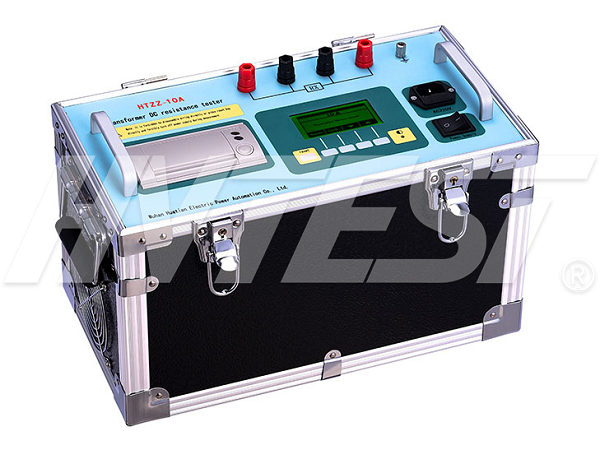Detection Technology
DC resistance tester measurement method
The DC resistance tester is a relatively common equipment in transformer test projects. Its measurement purpose is to check whether there is a short circuit, an open circuit or a wrong wire connection in the conductive circuit; check whether the welding point of the winding wire, the connection between the lead and the bushing is good, Whether the tap switch has poor contact, etc. What are the measurement methods of the transformer DC resistance tester?
1. Current and voltage method
The principle of the current-voltage method: In the winding to be tested, pass an appropriate DC current, then measure the current in the winding and the voltage drop across the winding, and then calculate the DC resistance of the winding according to Ohm's law.
When measuring, the instrument used should be no less than 0.5 grade, the ammeter should be of smaller internal resistance, the voltmeter should be of higher internal resistance, and the lead should have sufficient interface. When measuring a winding with a large inductance, sufficient charging time is also required. The current through the winding should be limited to 20% of the rated current of the winding. The main disadvantage of this measurement method is that it takes a long time to measure an accurate value.
2. Balanced bridge method
The principle of the balanced bridge method: The principle of the bridge balance is used to measure the DC resistance. The commonly used balanced bridge method has two kinds of single-arm point and half or double-arm electric boards.
This method can directly read the data with high accuracy. In the actual measurement of medium and small transformers, the DC bridge method is mostly used. When the resistance value of the tested coil exceeds 1Ω, it is generally measured with a single-arm bridge, which is less than 1Ω. When using a double-arm bridge to measure.
When using double-arm bridge wiring, the potential pile head of the bridge should be close to the resistance to be measured, and the current pile head should be connected to the potential pile head. Before measurement, you should estimate the resistance value of the coil under test, set the bridge magnification knob to an appropriate position, make the galvanometer pointer move to the zero line in the middle of the galvanometer scale, make fine adjustments, and wait for the pointer to stop at the zero position steadily. Record the resistance value when it is up. At this time, the measured resistance value=multiplying factor×measurement arm resistance value. After the measurement is completed, first release the galvanometer button, and then release the power switch.
3. Three-phase winding simultaneous pressurization method
The three-phase windings are simultaneously applied with voltage to measure the DC resistance of the transformer. According to Lenz’s law, the magnetic fluxes generated by the currents of each phase cancel each other out in the iron core, and the resulting magnetic flux is zero, thereby reducing the inductance L value and making the circuit The time constant is reduced, that is, the time for measuring the DC resistance is reduced, and the work efficiency is improved.
When measuring, we should also consider factors such as the size of the winding resistance affected by temperature and the imbalance of DC resistance. It takes a long time to measure the DC resistance with the voltage drop method to obtain an accurate value, mainly because the current flowing in the coil produces a magnetic flux in the high permeability iron core during the change process, which causes L to increase. If the magnetic flux is reduced, the value of L is also reduced, and the time for current change (depending on the time constant) is reduced.
This can be achieved by applying pressure when the three-phase windings of the transformer are the same and measuring the DC resistance of each phase at the same time. When the three-phase windings are pressurized at the same time, the current flowing in each phase winding increases from zero. According to the right-hand spiral rule, the three-phase currents produce different magnetic flux directions in each iron core, and their effects are mutually exclusive. Cancellation, the result is that the resultant magnetic flux in the iron core is approximately zero. This greatly reduces the inductance value L, so the time constant t is also reduced, and the excessive process of current changes during the test is greatly shortened. A stable current value can be obtained in a short time, and then the DC resistance value of the winding can be obtained.
How to maintain the circuit breaker tester? | 2021/7/5 | reading735time How to perform transformer fault diagnosis | 2021/7/4 | reading716time return


